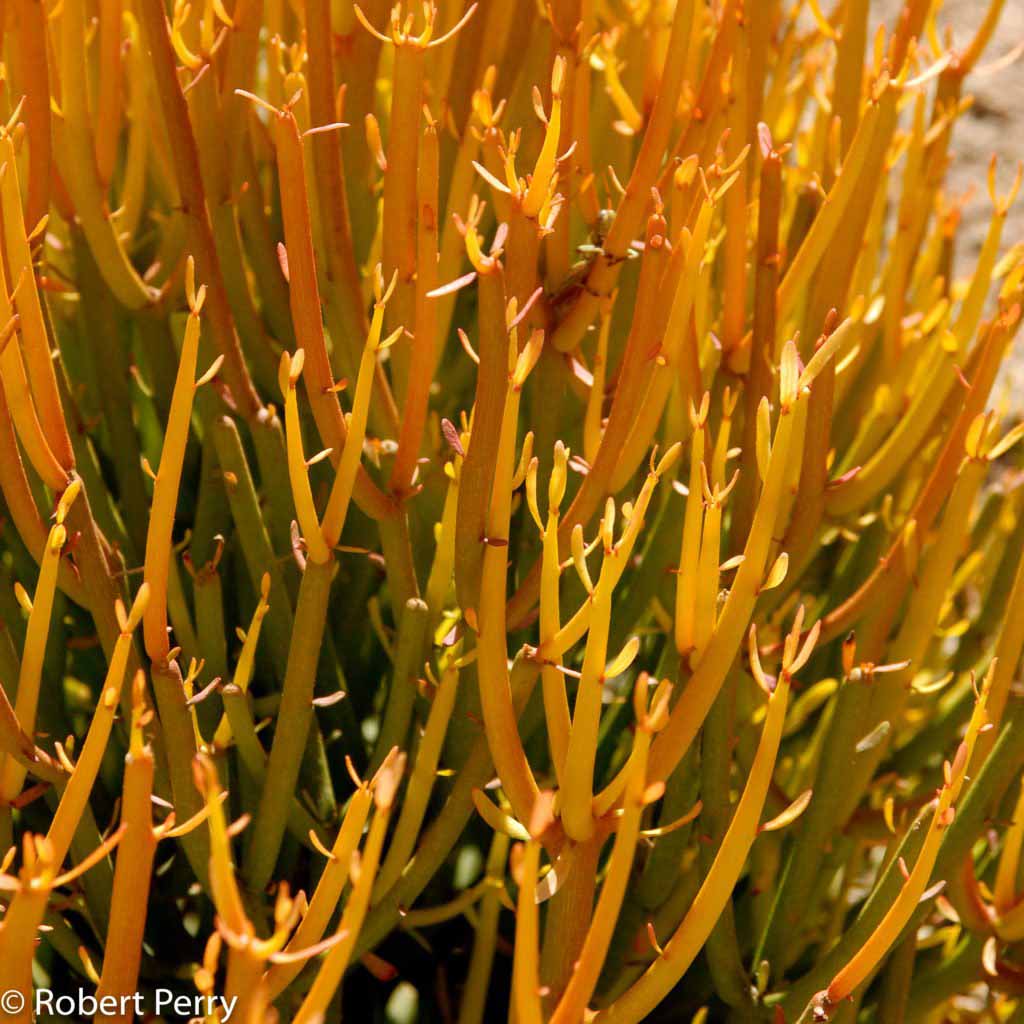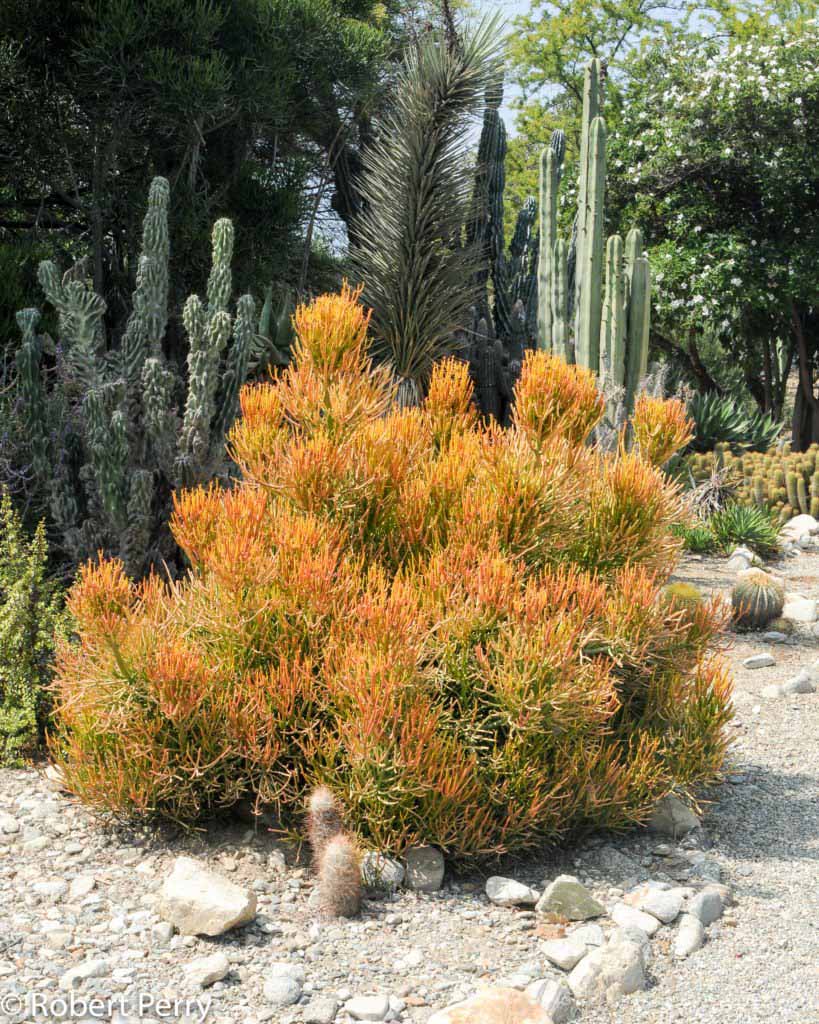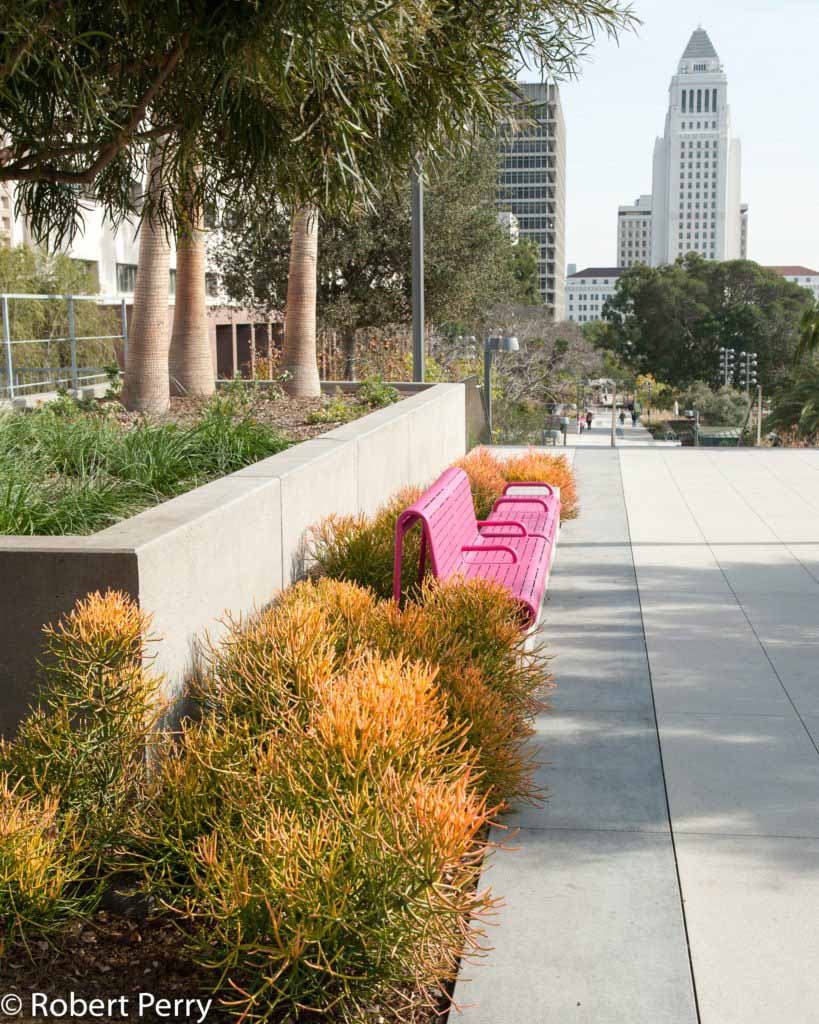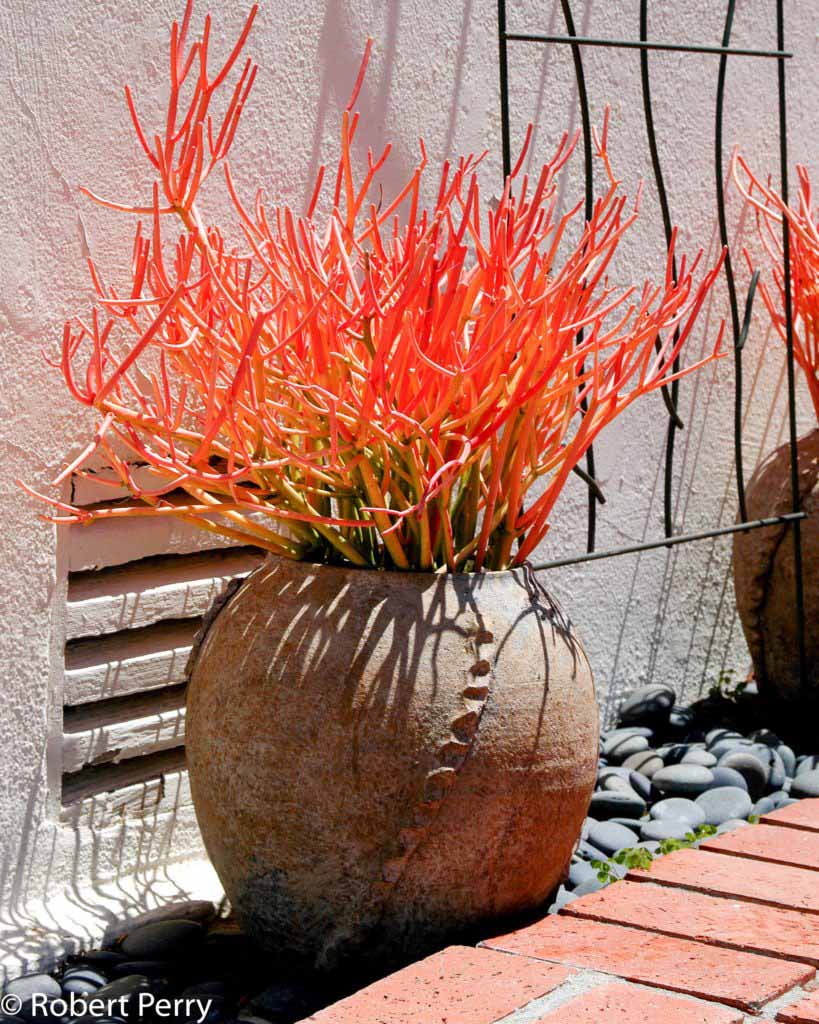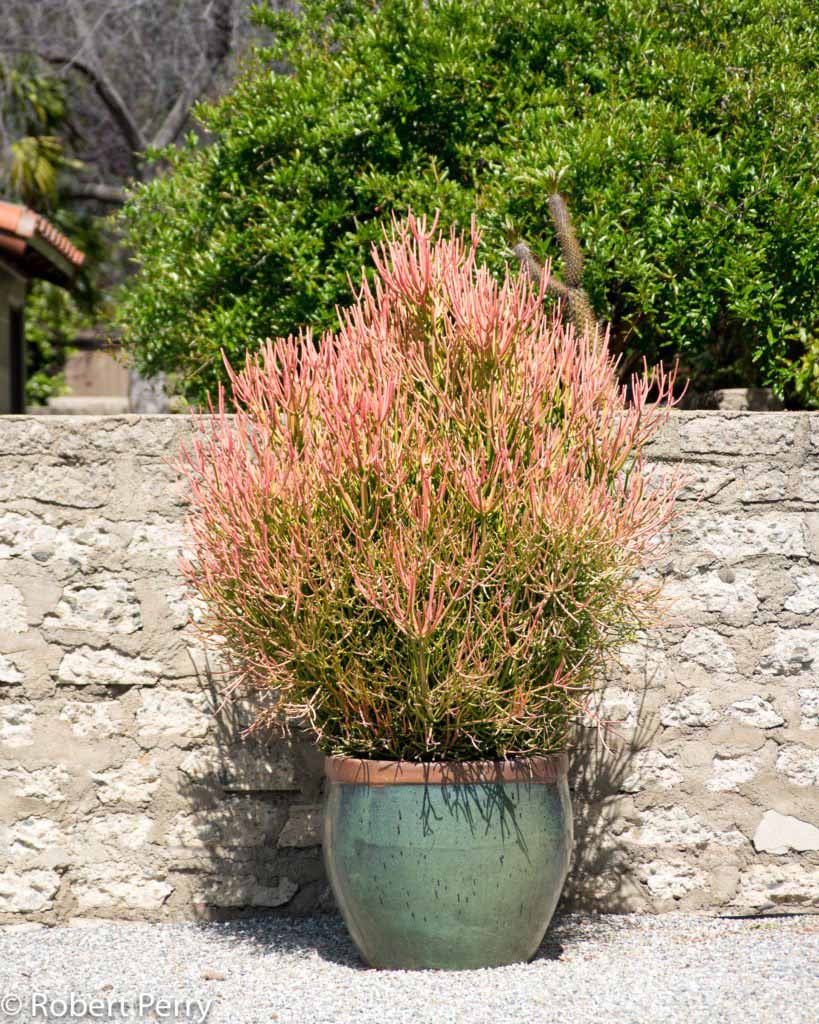This is a popular container plant, as a focal element in succulent gardens, on banks and southwestern style plantings. Young plants are tender to frost and do best in warm and sunny microclimates. Like other Euphorbias, E. t. ‘Sticks on Fire’, has a poisonous sap that drips from cut stems and care must be taken when trimming this plant, including the use of protective eyewear.
Sticks on Fire
Euphorbia tirucalli ‘Sticks on Fire’
Description
Plant properties
Water needs
Maintenance
Plant Type: Succulent
Foliage Character: Evergreen
Habit: Upright, Rigid, Open, Multi-trunk, Irregular branching
Growth Rate: Moderate
Foliage Color: Red, Orange
Flower Color: Insignificant
Flower Season: Spring
Soil Adaptations: Well-draining soil
Exposure Adaptations: Morning sun, Heat, Drought, Aridity, All day sun, Partial sun
Function: Container plant, Banks, Background plant, Specimen, Residential spaces, Raised planters, Foliage accent plant
Height: 4 ft. – 8 ft.
Width: 3 ft. – 5 ft.
Foliage Character: Evergreen
Habit: Upright, Rigid, Open, Multi-trunk, Irregular branching
Growth Rate: Moderate
Foliage Color: Red, Orange
Flower Color: Insignificant
Flower Season: Spring
Soil Adaptations: Well-draining soil
Exposure Adaptations: Morning sun, Heat, Drought, Aridity, All day sun, Partial sun
Function: Container plant, Banks, Background plant, Specimen, Residential spaces, Raised planters, Foliage accent plant
Height: 4 ft. – 8 ft.
Width: 3 ft. – 5 ft.
Watering Schedule: Low 1
For most situations, we recommend watering deeply every 3-4 weeks after establishment.
Learn how to apply this watering schedule to your landscape on our How to water waterwise and California native plants page.
Important Notes
- These are general guidelines. Always observe and adjust as necessary for your landscape.
- If it rains over 1” you will likely not need to water for at least another 3-4 weeks. Before watering again, check the soil. It should be significantly dry at least 4” below the soil surface before watering.
- If you have a “smart timer” or weather sensitive irrigation controller, it is best not to use the automatic weather adjusting features for plants in this category. While very useful for watering higher water demanding plants, those in this category have natural drought adaptations which mean they do not need to be watered more in warm weather. Using the weather adjusting features will result in either overwatering in summer or underwatering in fall and spring.
- It is important to group plants with the same water needs together in the landscape to avoid needing to over or under water plants when running your irrigation system.
When pruning any Euphorbia, always wear eye protection and gloves, and avoid contact with the highly irritating white sap. If it gets on you, wash it off immediately (S). Can be pruned for cuttings to root or for size control in spring (D).
References
Sign Up For Free
To access all the features of this website, please create an account with us. Privileges include:
- Ability to print plant groups, lists and plant profiles
- Create your own plant groups
- Receive monthly updates by email
An online resource for you to learn about and choose the best plants for your inland Southern California landscape.
Promoting water conservation through education, stormwater capture, waterwise landscapes, and other initiatives.
We provide programs, services, and resources to serve audiences of all ages to cultivate a community-wide conservation ethic and build regional capacity for water resilience.
